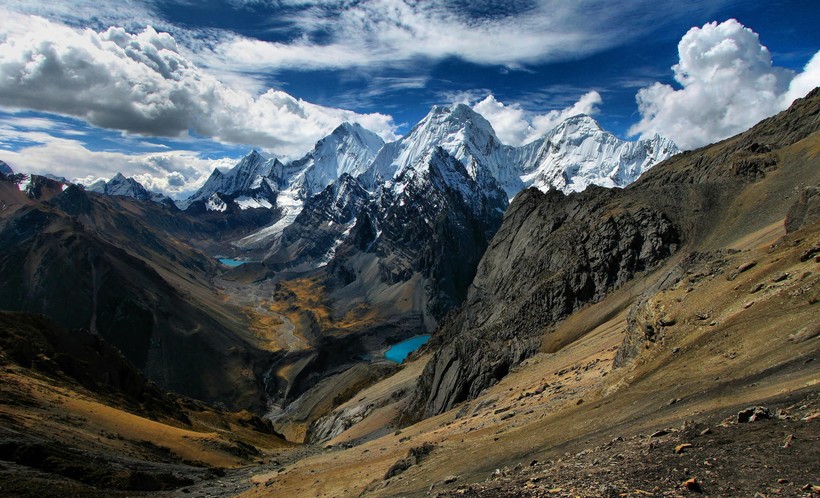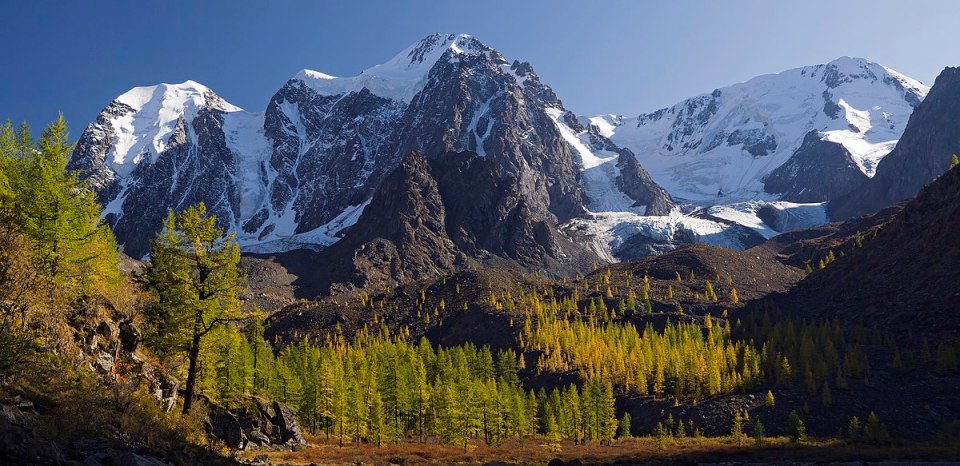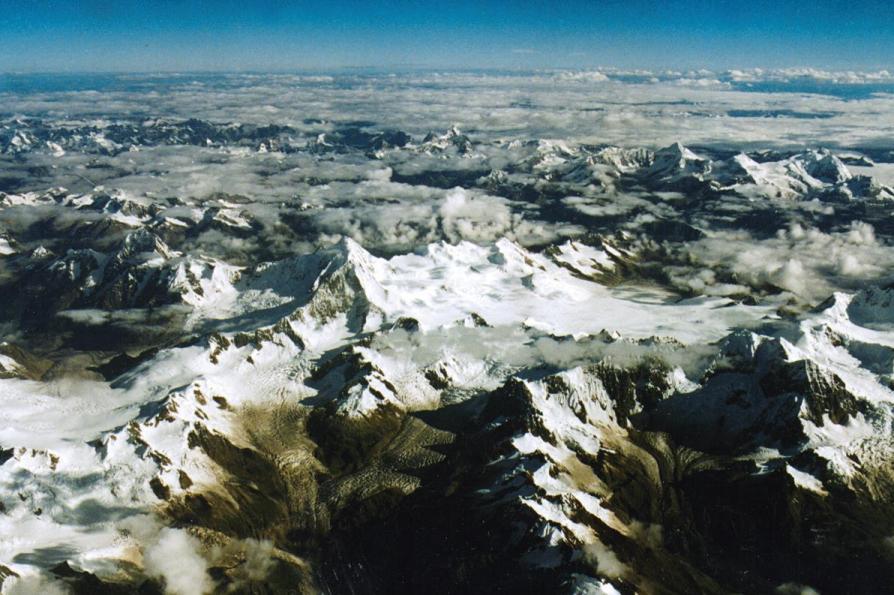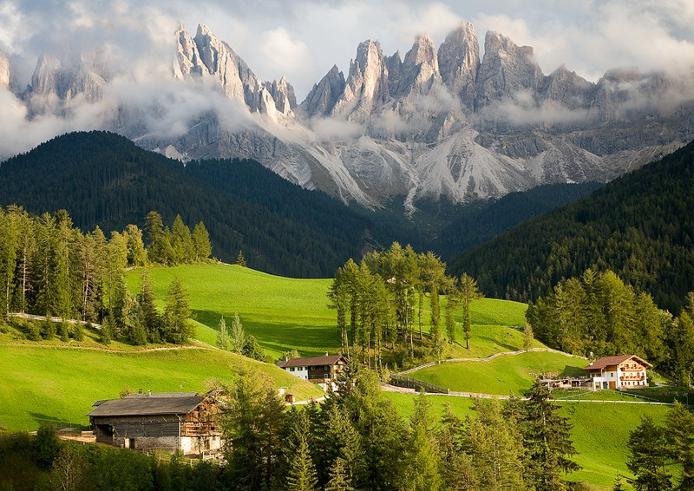Isotopic analysis of rocks near the Andes glaciers has shown that these glaciers have become smaller than at any time in the Holocene, which indicates significant warming in the tropics. Scientists have recorded a violent bloom of blood-red algae Chlamydomonas nivalis on glaciers in the Altai Mountains this year, which leads to their more active melting and may be an indicator of climate change. Small glaciers in northwest China will disappear by the middle of the 21st century. The China Daily newspaper, citing local scientists, reports that the disappearance of glaciers is inevitable, and this should be expected “regardless of the climate scenario and the amount of precipitation.”
Isotopic analysis of rocks near Andean glaciers has revealed that the glaciers are smaller than at any time during the Holocene, indicating significant warming in the tropics. The accelerated retreat signals the transition to the Anthropocene, an era marked by human impacts, raising concerns about similar trends around the world.
Newly exposed rocks covered in prehistoric ice show tropical glaciers have shrunk to their smallest size in more than 11,700 years, suggesting that tropical temperatures have already exceeded levels last seen during the Holocene epoch, Boston College researchers report in the journal Science.
Scientists had predicted that glaciers would melt or retreat as temperatures rose in the tropics, the regions that border the Earth’s equator. But the study’s analysis of rock samples from around four glaciers in the Andes shows that the retreat is happening much faster, and has already reached a worrying threshold between eras. The findings suggest that most of the world’s glaciers are likely retreating much faster than previously predicted, possibly decades ahead of the harsh climate timeline.

Scientists knew that glaciers had been retreating around the world over the past century, but it was unclear how the scale of this retreat compared with the range of natural variations over the past few millennia. A team of researchers set out to determine how small tropical glaciers are today compared to their size over the past 11,000 years. The scientists traveled to Colombia, Peru, and Bolivia to measure the chemical composition of bedrock that had only recently been exposed in front of four melting glaciers covering the tropical Andes. Two rare isotopes, beryllium-10 and carbon-14, are known to accumulate on bedrock surfaces only when they are directly exposed to radiation from space. By measuring the concentrations of these isotopes in newly exposed rock, it is possible to determine how long in the past that rock was exposed, telling us how often glaciers were smaller than they are today. In the study, the scientists found virtually no beryllium-10 or radiocarbon-14 in any of the 18 bedrock samples they took from in front of four tropical glaciers, suggesting that these glaciers have never been significantly exposed to cosmic radiation since they formed during the last ice age.
So, the current ice melt is abnormally large, but has not yet reached a dangerous level compared to the melting of ice throughout the Holocene. Scientists plan to study more glaciers and use this technique, which clearly shows whether a glacier was ever smaller than it is today.
Scientists have recorded a violent bloom of blood-red algae Chlamydomonas nivalis on glaciers in the Altai Mountains this year, which leads to their more active melting and may be an indicator of climate change, RIA Novosti was told at Tomsk State University (TSU).
Scientists and students from Tomsk State University and Moscow State University noted a phenomenon during their study of the glaciers of Gorny Altai – a violent bloom of Chlamydomonas nivalis algae (snow chlamydomonas). These single-celled plants are able to exist at low temperatures. Recently, their bloom has become increasingly active, which leads to the glacier being colored blood-red.

During the expedition, scientists measured the glacier’s reflectivity (albedo – the ratio of the amount of radiation reflected from the surface to the amount of radiation falling on that surface) and found that algae bloom reduces it, which means it leads to more active melting of ice and snow.
The studies were conducted on the Levy Aktru and Vodopadny glaciers, located at altitudes from 2,600 to 3,556 meters above sea level. Scientists noted that this year the algae are blooming more actively than last year. The increase in algae activity on the glacier may indicate a change in the conditions of existence not only of living organisms on the glacier, but also their impact on the existence of the glaciers themselves, which are one of the most sensitive indicators of climate change.
Small glaciers in northwest China will disappear by the middle of the 21st century. The China Daily newspaper, citing local scientists, reports that the disappearance of glaciers is inevitable and should be expected “regardless of the climate scenario and amount of precipitation.”
Small glaciers measuring less than half a square kilometer in northwestern China’s Xinjiang Uyghur Autonomous Region (XUAR) will disappear by the middle of this century due to global warming, the China Daily newspaper reported, citing local scientists.
According to them, the disappearance of glaciers is inevitable, and this should be expected “regardless of the climate scenario and the amount of precipitation.” In particular, this is the conclusion reached by specialists from the Xinjiang-Tianshan National Glacier Observation and Research Station of the Chinese Academy of Sciences.

As the publication specifies, glaciers with an area of up to 2 square kilometers in this region will completely melt by the end of the 21st century, and only one-third of glaciers with an area of up to 10 square kilometers will remain. “Due to global warming, the total area of glaciers in XUAR has decreased by 11.7% over the past 50 years, the rate of reduction in different areas varies from 8.8% to 34.2%,” said the head of the observation station, Wang Feiteng.
He noted that accelerated melting will lead to increased water runoff. It is expected that the tipping point (a critical indicator after which a downward trend will occur – TASS note) of catchment areas associated with large glaciers will be reached by 2050. For smaller ice accumulations, it will occur in the next 10-20 years.
Glaciers are considered the main source of water in China’s arid northwest region. According to official data, there are more than 20,600 of them in Xinjiang, accounting for about 42 percent of the national total. The total area of this glaciated mass exceeds 22,600 square kilometers.
Dolomite glaciers given ‘death sentence’. Marmolada, the largest and most famous glacier in the Dolomites in northern Italy, is in an ‘irreversible coma’ and could disappear by 2040, Italian scientists have said in a joint study. The study, ‘Caravan of Glaciers’, by environmental association Legambiente, the International Commission for the Protection of the Alps Cipra and the Italian Glaciology Committee, says the glacier has lost 70 hectares (the equivalent of 98 football pitches) in the last five years, shrinking from 170 hectares (438 acres) in 2019 to 98 in 2023. At this rate, Marmolada will no longer exist by 2040.

Scientists recalled that 136 years ago, Marmolada stretched for about 500 hectares and reached an area of 700 football fields. Since then, the glacier’s area has shrunk by more than 80%, and its volume by more than 94%. In 2024, the maximum ice thickness is 34 meters.
A similar “death sentence” has been passed on two other major glaciers in the Alps: Adamello on the border of the Lombardy region and the province of Trento, and Forni in the same Lombardy.
Measurements of the glacier surface show that the Marmolada and Forni glaciers have short-term peaks of thickness loss of up to 7 and 10 centimeters per day, respectively. In early September, scientists from the MeteoTriveneto association reported that temperatures on the glacier had not dropped below freezing for two months.




